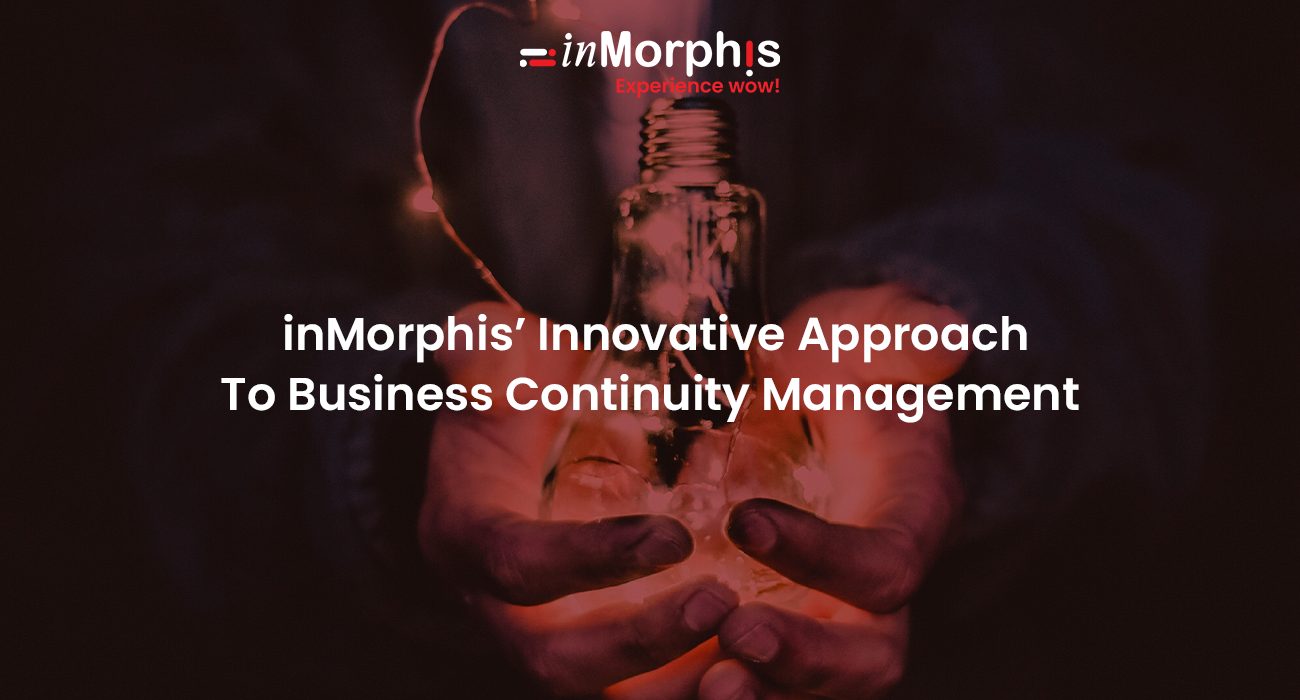Business Continuity Management (BCM) is a critical process. It ensures that an organization maintains an acceptable business operation during a disaster with minimal disruption. Disrupting events can be anything ranging from natural disasters, pandemic or workplace violence to any event that results in a disruption of business operations. BCM works on the principle that good response systems should be able to mitigate damages. Its objective is to minimize any kind of disruption and damage (physical or reputational) to the business and to felicitate smooth and rapid restoration of services.
In ServiceNow, BCM is a part of the GRC suite of applications that inMorphis innovatively implements to provide timely, comprehensive, and continuous information for auditing, reporting, and compliance purposes.
inMorphis as an implementor has covered BFSI domain for BCM and has been one of the few implementors of BCM in the domain.
Features of High Impact
1) Libraries – Business processes, IT assets, IT facilities and vendors are the basic libraries needed to establish the dependency mapping. They are the assets being referenced in the business impact analysis and the business continuity planning.
2) Business Impact Analysis (BIA) – Prioritize and create an inventory of critical services, processes, business application, third-party applications, and locations. It also helps in identifying high risk assets and failures that have high potential business impact. Fundamentally, BIA analyzes the direct impact on business and contains any entity that will have an impact on day-to-day business operations.
3) Continuity Planning – Helps in developing continuity and recovery plans for all critical business processes and functions. It helps in developing a business continuity strategy for each activity. Disaster recovery provides capabilities to protect, recover, and restore the organizational critical data and its technology systems. It contains having plans for every possible scenario affecting the critical units/ parts.
4) Recovery Plan Exercising – Check business continuity plans by employing continuous testing and improving the effectiveness of the plans and usability during simulated and actual crisis. This is the mock drill that happens through testing of all the plans and scenarios created for the entire process.
5) Crisis Management – Focus on action and apply the appropriate strategy to mitigate the harmful impact of a disruption to the business system when the actual crisis hits. This is the process that comes into action when anything undesirable hits the organization.
Read More: A Statistical Perspective on GRC Adoption by Organizations
inMorphis + ServiceNow BCM – Key Capabilities
1) Prioritization – With laser-sharp focus on continuity and recovery plans, BCM can prioritize critical business entities/units whose operation is most needed during an undesirable event.
2) Reduce Manual Tasks – Facilitate the shift from cumbersome manual processes to automation. inMorphis + SeviceNow BCM process helps in shifting the entire BCM workflow from manual tools like MS Excel, SharePoint, etc. to a centralized, automated platform.
3) Agile – Run Agile Scrum Cycles during execution process.
4) Real Time Dashboard – Platform with real-time dashboards and easy-to-track activities and events is provided in the BCM Process. This can track number of BIAs running, BCPs in place along with exercises and crisis management happening within the organization.
5) Exercise – Run critical or disaster scenarios and test all necessary steps the organization needs to perform to return to normal. Exercise acts as a necessary hands-on practice for all the employees, so they can be ready for the real event, if any.
Read More: How GRC Can Bring Changes in An Organization?
When inMorphis Manages Your Business Continuity
1) Identifying critical business processes or units needing more attention during any crisis and providing workflow for the continuous monitoring of risk along with plans. Critical entities are prioritized and acted upon in accordance with priority.
2) Single source of records for all the BCPs and response plans. All BCPs and Response plans can be accessed at a single platform instead of being at different sources.
3) Automation of creating BCPs and BCP Tests. Once created, BCPs and Tests can be automated.
4) Use of CMDB business and IT operational data to monitor against risk tolerance. CMDB data is used as foundation data for BCM process and utilized in the module to discourage any delicacy.
5) Finding gaps between key elements while analysing business impacts or mapping CMDB dependencies.
Read More: Skills required for servicenow developer
How it Benefits Businesses
1) Identify - Prioritizing business units/ functions and dependencies according to their importance in the business operations.
2) Analyse - Analysing downtime (the time for which it is disrupted) of critical processes and assets to determine both Recovery Time Objective as well as Recovery Point Objective.
3) Create - Creating continuity plans/ recovery plans for critical business entities for their uninterrupted operations.
4) Ensure - Ensuring employees are well rehearsed with response/recovery activities through Recovery Plan Exercising, this will make the employees future ready.
5) Track - Tracking ongoing crisis and recovery tasks at a single dashboard and checking their ongoing status.
6) Automation - Automating Business Continuity Plans and Response Plans. All BCPs along with BIAs can be automated to remove redundant manual process.
7) Centralized Repository - Centralized repository for all BCPs, all BCPs (current and retired/old) can be accessed at one place which in turn helps in fulfilling the regulatory compliances of regulatory agencies like RBI, etc.
8) Dashboards – Viewing of Real Time Dashboard by respective managers, while they can perform their assigned tasks along with delegating tasks to recovery staffs.
Read More: Top 5 Benefits of partnering with ServiceNow partners

